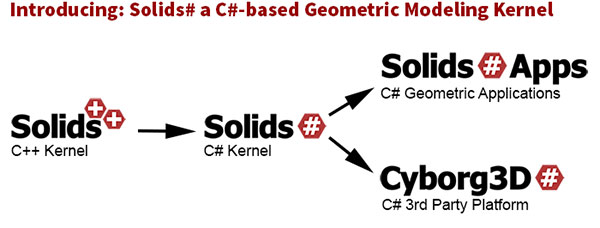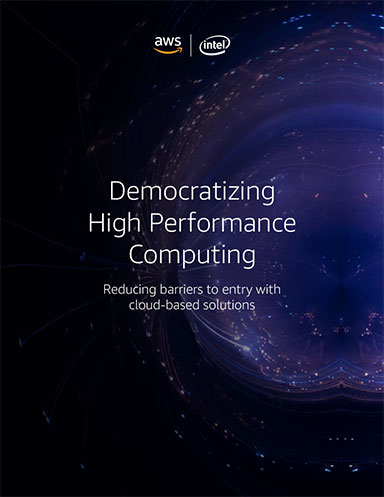IntegrityWare Releases Modeling Kernel
C# is a high-level programming language.

SOLIDS# is a fully functional geometric modeling kernel written completely in the C# programming language. Image courtesy of IntegrityWare.
Latest News
August 29, 2023
IntegrityWare, Inc. has released SOLIDS#, a geometric modeling kernel written entirely in the C# programming language.
C# is a high-level programming language; and for geometric modeling, C# is also a igh-performance language due to algorithm optimization and parallel processing. SOLIDS# is an Object-Oriented, non-manifold modeling kernel with a suite of tools for solid, surface, curve, polygonal and subdivision surface modeling.
SOLIDS# has functional breadth and depth to be used in virtually any 3D modeling application. The Non-Manifold Topology (NMT) data structures allow the representation of objects impossible to represent using traditional manifold topological structures. The combination of solid / surface modeling tools with polygonal modeling tools makes SOLIDS# potentially useful for applications development across various industries.
The curve, surface and subdivision surface modeling (SubD) enable SOLIDS# to be used for applications such as industrial design and graphical design. The fast intersection, ray-tracing and query tools make it optimal for analysis and measurement applications such as CMM, optical analysis, and NC. The fast multi-threaded tessellation engine makes it useful for finite element method analysis packages and high-performance graphics systems. Hidden curve removal is useful for drafting, drawing production and documentation.
Feature List
This feature list includes some of the important SOLIDS# tools:
Booleans
SOLIDS# supports Boolean Union, Intersection and Difference of traditional manifold solid objects, plus the various combinations of curve, solid, surface and non-manifold objects. SOLIDS# supports non-manifold results. There is also a 2-D Boolean tool.
Filleting
SOLIDS# supports surface filleting and topological filleting. Highlights are: variable radius filleting, G2 & G3 blending surfaces, large radius cases.
Tessellation Engine
The tessellation engine generates a polygonal approximation from a NURBS based boundary representation (BREP), which is useful for graphics applications. All tessellation parameters and tolerances can be set by the user to achieve a wide variety of meshes suitable to the given application.
Advanced Surfacing Tools
The Advanced Surfacing Tools give the user tools to create higher order surfaces, with higher continuity connections between adjacent surfaces.
NURBS Ray-Firing
SOLIDS# has an optimized, multi-threaded ray-firing utility able to fire tens of thousands of rays per second at NURBS surfaces and BREP objects.
Sweeping and Primitive Creation
SOLIDS# supports various sweeping and primitive creation tools like Box, Cylinder, Cone, Torus, Revolution, Extrusion, Sweep along Curve, Loft, Rail Sweep, Swung and Planar.
Sewing
SOLIDS# has a sewing tool that can be used to combine trimmed surfaces into solids or open shells.
Trimming Tools
The Trimming Tools allow users to create BREP faces from various inputs. It handles periodic surfaces, 3D trimming curves, 2D trimming curves, surfaces with C0 continuity, and other difficult trimming problems often associated with importing data from different systems.
Mesh Tools
SOLIDS# includes a highly optimized structure for handling large meshes such as those produced by scanning.
Database IO
This gives a mechanism to serialize the SOLIDS# BREP and polygon objects by supplying low level read/write methods associated with a native database.
SOLIDS# Cloud Computing
The development of .NET Core has enabled SOLIDS# to transparently migrate to all other .NET Core platforms such as Mac, Linux, and Unix. SOLIDS# can be used to develop cloud-based, or multi-platform applications. The upcoming .NET Core 3.0 release will support WPF and also enable our SOLIDS# application framework to be multi-platform.
SOLIDS# Apps
SOLIDS# Applications are advanced applications built on top of the SOLIDS# modeling kernel. The package includes never-fail shelling/offsetting, Sub-D to NURBS conversion, triangle mesh to quads, mesh offsetting/insetting, quad fill, and other reverse engineering tools.
Reverse Engineering Scanned and Sculpted Meshes
SOLIDS# Reverse Engineering is able to capture small details from scanned and sculpted meshes when creating CAD NURBS BREP data. The two-step process of Quad Wrap and Shrink Wrap gives flexibility in determining the quality of the resulting CAD data.
Sources: Press materials received from the company and additional information gleaned from the company’s website.
More IntegrityWare Coverage
Subscribe to our FREE magazine, FREE email newsletters or both!
Latest News
About the Author
DE’s editors contribute news and new product announcements to Digital Engineering.
Press releases may be sent to them via [email protected].






